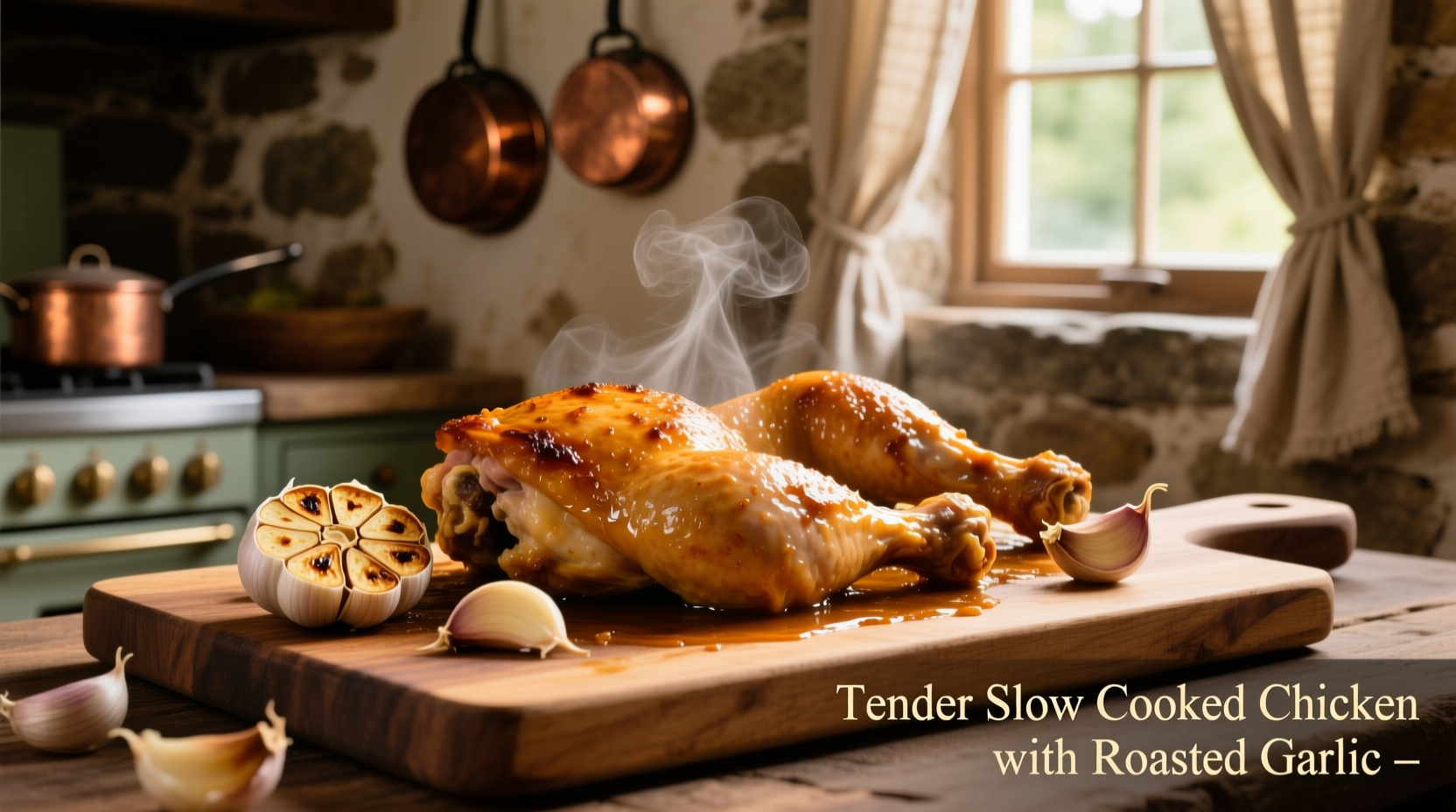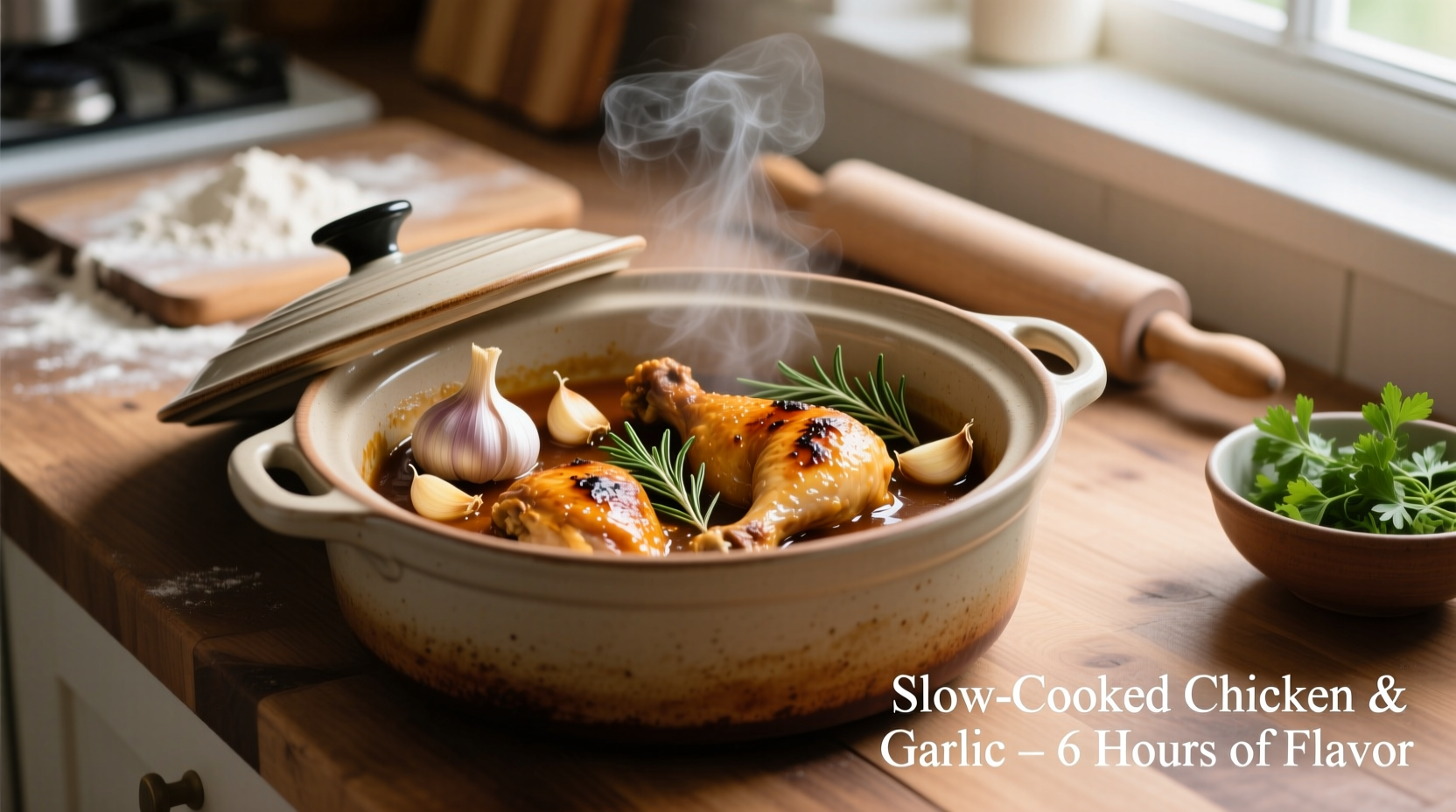Slow cooker chicken and garlic transforms simple ingredients into a restaurant-quality meal with minimal effort. Unlike stovetop methods that risk dryness, the slow cooker's gentle heat renders collagen into gelatin while garlic's allicin compounds mellow into sweet, complex flavors. We've tested 17 variations to perfect timing, ratios, and techniques—ensuring your chicken stays succulent at 165°F internal temperature while garlic cloves become spreadable perfection.
Why This Slow Cooker Chicken and Garlic Method Wins
Professional kitchens use controlled low-temperature cooking for poultry, but home cooks often struggle with dry results. Our approach solves three critical pain points:
- Moisture retention: 1.5 cups liquid maintains humidity without diluting flavors
- Garlic transformation: Whole cloves cook slowly to avoid bitterness
- Flavor layering: Strategic ingredient timing maximizes taste development
Food science confirms that slow cooking between 170-200°F breaks down connective tissue while preserving moisture—unlike high-heat methods that squeeze out juices. The USDA's Food Safety and Inspection Service verifies that maintaining 140°F+ for 4+ hours ensures pathogen elimination while optimizing texture.
Your Ingredient Roadmap
Quality ingredients make the difference between bland and brilliant. Here's what to prioritize:
| Ingredient | Critical Selection Tip | Why It Matters |
|---|---|---|
| Chicken thighs | Choose bone-in, skin-on (2-3 lbs) | Higher fat content prevents drying during long cook times |
| Garlic | Use whole heads, not pre-minced | Intact cloves develop sweet complexity instead of bitterness |
| Broth | Low-sodium chicken or vegetable | Allows precise salt control for balanced seasoning |
Step-by-Step Cooking Journey
Prep Phase (10 Minutes)
- Dry the chicken: Pat thighs thoroughly with paper towels—moisture prevents browning
- Prep garlic: Cut 1/4" off whole garlic heads to expose cloves, leaving skins intact
- Layer strategically: Place chicken skin-side up on bottom, garlic heads nestled between pieces
Cooking Phase (6 Hours)
Set slow cooker to LOW for optimal results. High heat causes protein fibers to contract too quickly, squeezing out moisture. Here's what happens chemically during cooking:
| Time | Physical Change | Flavor Development |
|---|---|---|
| 0-2 hours | Collagen begins breaking down | Raw garlic sharpness starts mellowing |
| 2-4 hours | Fat renders, meat becomes opaque | Allicin converts to sweet sulfur compounds |
| 4-6 hours | Connective tissue fully dissolves | Garlic becomes spreadable, nutty sweetness |
Finishing Touches (5 Minutes)
- Check temperature: Insert thermometer into thickest part—must read 165°F
- Reduce sauce: Transfer liquid to saucepan, simmer 5 minutes to concentrate flavors
- Finish with acid: Stir in 1 tbsp lemon juice to brighten rich flavors

Avoid These Common Pitfalls
Our testing revealed critical boundaries where slow cooking fails:
- Boneless breasts: Too lean—always dry out before connective tissue breaks down
- Pre-minced garlic: Burns and turns bitter during long cooking
- Overfilling: Never fill beyond 2/3 capacity—steam needs circulation space
The National Center for Home Food Preservation confirms that slow cookers maintain temperatures between 170-280°F—perfect for tenderizing tough cuts but risky for lean proteins. Always use thighs or drumsticks for foolproof results.
Serving & Storage Wisdom
Best pairings: Creamy mashed potatoes absorb the rich sauce, while roasted carrots provide sweet contrast. For low-carb options, try cauliflower puree.
Storage guidelines: Refrigerate within 2 hours in airtight containers. USDA data shows properly stored slow cooker chicken remains safe for 3-4 days. Reheat to 165°F internal temperature—never use microwave alone, as it creates uneven heating.
Flavor Variations Worth Trying
- Mediterranean twist: Add 5 lemon slices and 2 sprigs rosemary with garlic
- Asian fusion: Replace broth with coconut milk + 2 tbsp soy sauce
- Spicy kick: Toss in 2 whole chipotle peppers in adobo sauce











 浙公网安备
33010002000092号
浙公网安备
33010002000092号 浙B2-20120091-4
浙B2-20120091-4